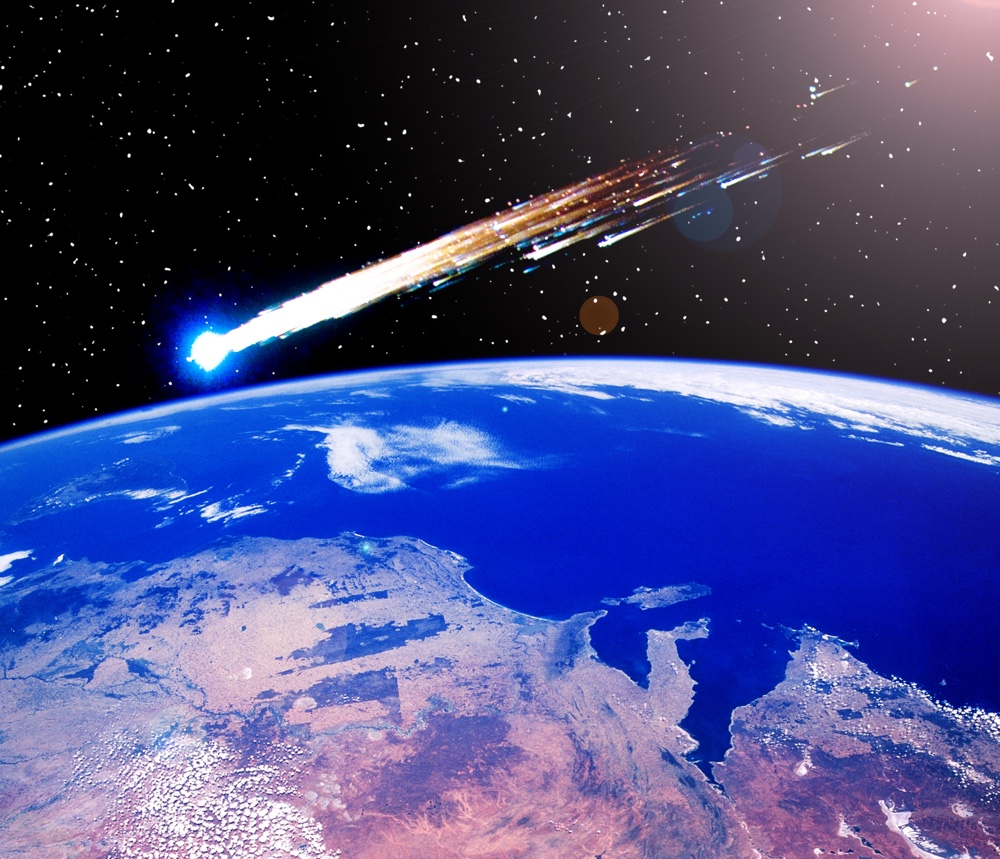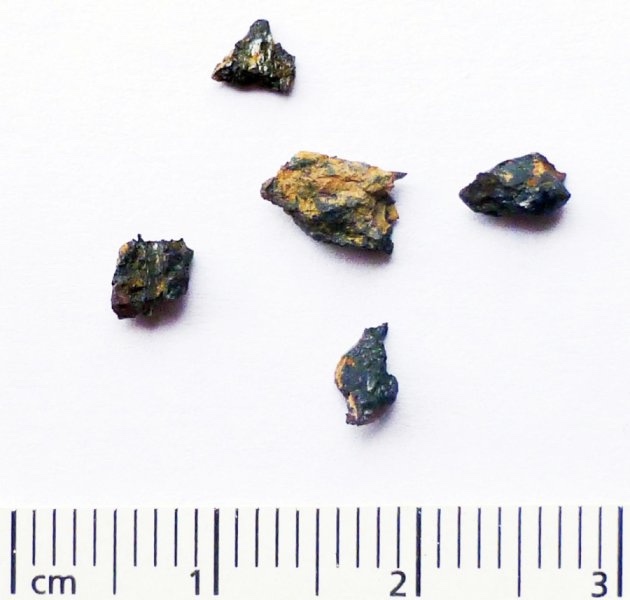Out-of-This-World Diamond-Studded Rock Just Got Even Weirder

A tiny chunk of stone that looks like nothing else ever seen in the solar system might be even weirder than scientists thought.
The Hypatia stone was found in southwestern Egypt in 1996. It was hardly more than a pebble, just 1.3 inches (3.5 centimeters) wide at its widest and a smidge over an ounce (30 grams) in weight. But analysis revealed that the stone (dubbed "Hypatia" for a fourth-century female mathematician and philosopher) fit into no known category of meteorite. Now, a new study suggests that at least some parts of the stone may have formed before the solar system did.
If so — and that is a big "if" — the stone might reveal that the dust cloud that eventually congealed into our solar system was not as uniform as previously believed. [Big Bang to Civilization: 10 Amazing Origin Events]
Oddball discovery
When the Hypatia stone was first discovered, researchers weren't sure where it came from. Because it is studded with microdiamonds 50 nanometers to 2 micrometers in size, one possibility was that it was a strange example of a type of diamond known as a carbonado diamond. But studies in 2013 and 2015 definitively knocked out that possibility: The ratios of noble gases in the stone show that it is most certainly from out of this world. (The diamonds probably formed from the shock when the space rock blasted through Earth's atmosphere.)

"This is a piece of extraterrestrial material," said Guillaume Avice, a postdoctoral scholar of geochemistry at the California Institute of Technology who participated in the 2015 study. [Greetings, Earthlings! 8 Ways Aliens Could Contact Us]
But that's about all that can be definitively said about the Hypatia stone. The makeup of the rock matches no known meteorite. In fact, the rock hasn't been officially categorized as a meteorite, even though it came from space, because only about 0.14 ounces (4 grams) of the original mass of the rock can currently be accounted for. It's not that the rest is permanently lost, Avice said, but it's been chipped apart and sent around to so many labs that fragments are all over the place. The Meteoritical Society requires 20 percent of a meteorite's original mass to be present to officially declare it to be a meteorite.
Mysterious minerals
In the new study, researchers focused on the minerals in the Hypatia stone. They discovered that the stone itself is not uniform, but consists of a carbon-rich matrix shot through with a variety of minerals. These mineral inclusions are as weird as the rest of the rock, the research team found. They include pure metallic aluminum nuggets, an extremely rare find in the solar system; moissanite and silver iodine phosphide grains; and strange ratios of elements that fail to match the typical ratios of solar system objects. For example, unlike any other solar object ever found, these minerals include a nickel-phosphide compound with very high ratios of nickel to iron.
Sign up for the Live Science daily newsletter now
Get the world’s most fascinating discoveries delivered straight to your inbox.
"There is no known or imaginable mechanism that [this compound] could have been produced naturally in the solar nebula," study leader Jan Kramers, a geologist at the University of Johannesburg, told Live Science in an email.
The solar nebula is the dust and gas that remained after the formation of the very early sun at the dawn of the solar system about 4.6 billion years ago. Kramers and his colleagues think that this portion of the Hypatia stone may have formed from the pre-solar nebula, making it older than the sun itself. The rest — the carbon-rich matrix — may have coagulated later in the coldest outer reaches of the solar nebula, according to Kramers, because forming large bodies requires a dense dust cloud like the solar nebula to provide the material.
But current theories of solar system formation hold that solar nebula dust was the same everywhere, and Hypatia doesn't fit that picture. The matrix of the stone contains no silicate minerals. The Earth and other rocky planets are full of silicates, and so are stony meteorites. If the matrix of the Hypatia stone formed from the solar nebula, that nebula couldn't have been totally uniform after all, Kramers said.
However, that interpretation of the Hypatia stone's formation is still questionable, Avice said. The test that would cinch whether any part of the object is presolar in origin is an analysis of the Hypatia stone's isotopes, or variations of atoms based on the number of neutrons in their nuclei.
"Presolar material has a very strange isotopic composition compared to the average values of the solar system," Avice said.
Kramers also said isotopic analysis of both the matrix and the mineral inclusions in the stone is the next step researchers need to take to better understand the mysterious space pebble.
Until then, Avice said, "we still don't know what this is, exactly."
Original article on Live Science.

Stephanie Pappas is a contributing writer for Live Science, covering topics ranging from geoscience to archaeology to the human brain and behavior. She was previously a senior writer for Live Science but is now a freelancer based in Denver, Colorado, and regularly contributes to Scientific American and The Monitor, the monthly magazine of the American Psychological Association. Stephanie received a bachelor's degree in psychology from the University of South Carolina and a graduate certificate in science communication from the University of California, Santa Cruz.










